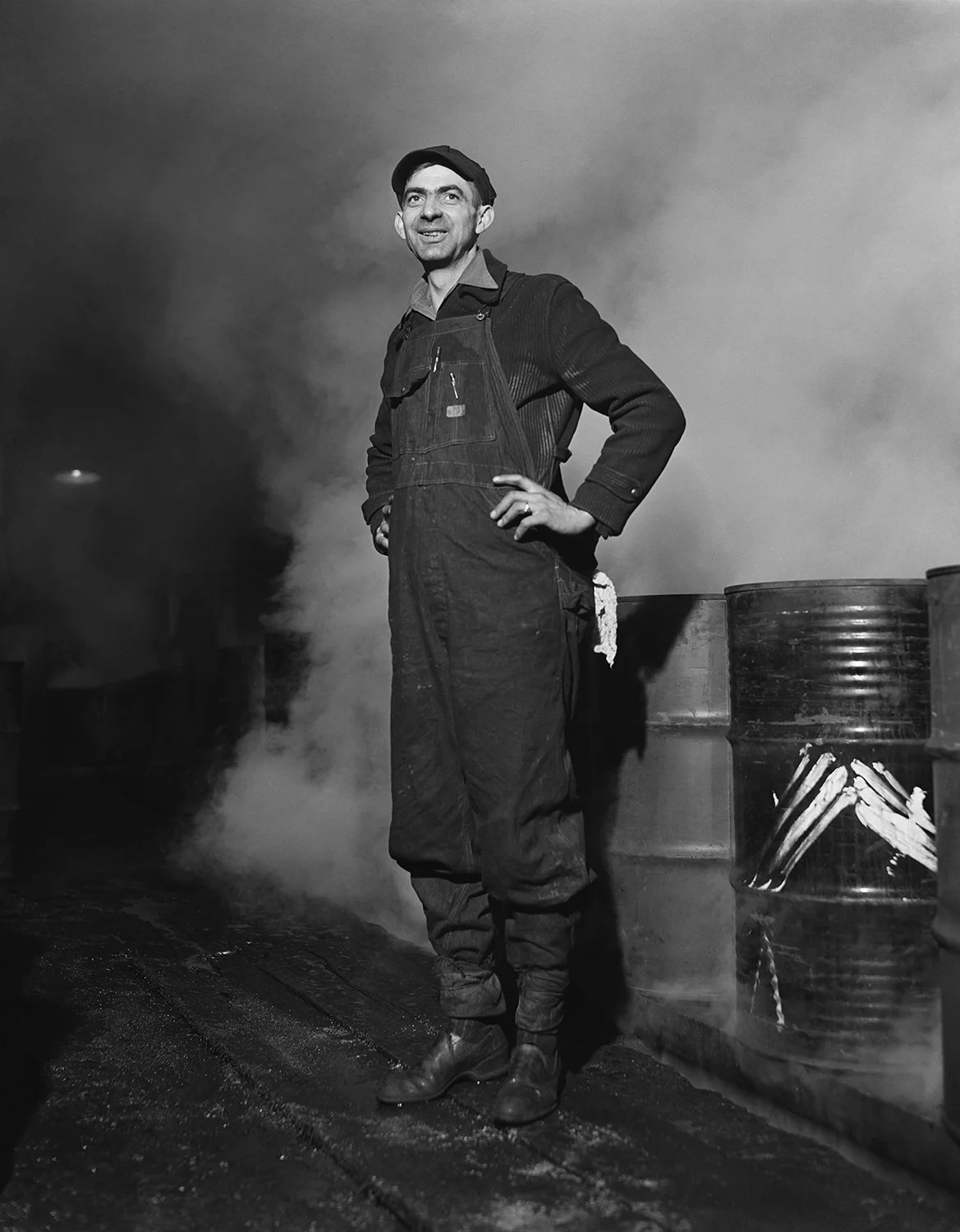Exhibition Review: Carnegie Museum of Art: Gordon Parks in Pittsburgh, 1944/1946
Photograph by Gordon Parks, Courtesy and copyright the Gordon Parks Foundation
Written By April-Rose Desalegn
Copy Edited by
The Carnegie Museum of Art is proud to present Gordon Parks in Pittsburgh, 1944/1946, an enduring collection of photographs by the timeless artist that examine World War II-era, Pittsburgh. Not yet seen by the public, Gordon Park’s photographs takes viewers through gritty and untapped lives of workers in the Penola, Inc Grease Plant who supplied essential goods to U.S troops during World War II. Each worker is manufacturing ‘Eisenhower grease’, an essential tool used bypiece in the U.S in defeating Nazi Germany and a source of great pride to the people of Pittsburgh during that time. Park’s emblematic humanism shines through the exhibition which boasts over 50 images, each revealing a tale of mid-20th century life that has been long neglected. In striking black- and- white, each negative is powerful and character-focussed, depicting workers in the act of production or posing jubilantly for portraiture. The composition of each image often lends itself to the dramatic, with dimly lit surroundings contrasting men poised against white smoke or glistening machinery. Similar toLike other pieces in his monumental career, the filmic melodrama and beauty Parks conjures in Gordon Parks in Pittsburgh, 1944/1946 is visual storytelling at its most raw and impressive. The photographs will be on display alongside carefully curated programming, community events and a publication which shall feature essays by writer Mark Whitaker, artist LaToya Ruby Frazier and more.
Photograph by Gordon Parks, Courtesy and copyright the Gordon Parks Foundation
Photograph by Gordon Parks, Courtesy and copyright the Gordon Parks Foundation
Parks wished to bring a sense of agency and representation to his subjects through his photographic work, as many of them faced racial discrimination in their communities. Sectioned by race, class and other roles, Park’s documentation of each worker shines a light on their experiences as individuals but also critical and proud figures of the community. Curator of photography and the Carnegie Museum of Art, Dan Leers, comments of this aspect of Park’s work, stating that ‘’The poignancy and respect with which Parks photographed his subjects is breathtaking, unforgettable, and certainly resounding’'.
Photograph by Gordon Parks, Courtesy and copyright the Gordon Parks Foundation
In one of the most striking pieces, a black worker stands tall before a oily, glazed drum that he lifts from a boiling lye solution, the dark metal cutting through heavy smoke billowing around him. Park’s uses a low angle to grant power to his subject who looks gallantly off-camera, the drama of the scene almost seeming to originate from a theatre production rather than real life. This was reflective of the high stakes of Pittsburgh’s reality – a time of war where communities and individuals banded together. Grease drips from the worker’s apron and glistens his cheeks, but the arduousness of his task is masked. Similarly, another striking piece depicts two workers with their faces brightly lit to contrast a blackened, sinister background. The workers kneel in grimy uniforms and look off- camera, slightly upwards, perhaps toward the future. A circle of small contraptions which produce flames hang from the ceiling, creating a hellish halo above the mens’ heads. Both men pertain a sense of hope for tomorrow that contrasts the sinister machinery behind them, despite the struggles today may bring.
Photograph by Gordon Parks, Courtesy and copyright the Gordon Parks Foundation
A buried yet precious component of Gordon Park’s monumental career will now be revealed at the Carnegie Museum of Art through Gordon Parks in Pittsburgh, 1944/1946. A collection of over 50 timeless images of the workers at the Penola, Inc Grease Plant will be shared with the public, reminding viewers of their comradery, dedication and hope in times of great social turmoil.
Photo Editing by Lenin Arache












